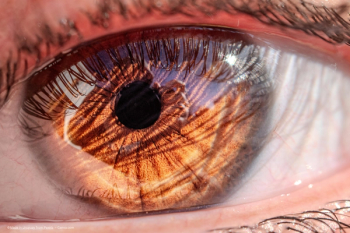
Changes in the ocular surface after glaucoma therapy
Prof. Iester describes his recent study investigating whether the addition of a tear substitute would protect exposed corneal epithelial cells from damage.
Topical prostaglandin analogues (PGAs) are one of the most commonly prescribed anti-glaucoma medications, and even if most of the PGAs are BAK preserved, they are largely used in clinics because of their IOP reduction efficacy and good systemic safety profile. However, it is possible that these eye drops, in the long-term, can cause a secondary dry eye syndrome with a secondary reduction of the patient's compliance and adherence to treatment.
Multicentre clinical study
The study was conducted in 5 Italian glaucoma centres (Genoa, Rome, Pisa, Milan, Siena). At the T0 visit, a tear substitute was prescribed to all patients to be used three times a day, in addition to their usual ophthalmic therapy. In this study, preservative-free 0.5% TSP single dose eye drops were chosen. TSP is a 'mucin-like' polysaccharide extracted from the seeds of the plant Tamarindus Indica with muco-adhesive and pseudoplastic properties and found to be protective for in vitro corneal epithelial cells exposed to damage.3,4
All patients were examined in vivo with a digital corneal confocal laser-scanning microscope (HRT II Rostock Cornea Module; Heidelberg Engineering GmbH, Heidelberg, Germany), which uses a 670-nm red wavelength helium neon diode laser source.5 The confocal laser scanning device uses a 60× objective water immersion lens and a working distance of 0 to 3 mm from the applanating cap. The images measure 400 μm × 400 μm, and the manufacturer specifies an optical section thickness of 4 μm. The module uses an entirely digital capture system.
Improvements found
Forty-two patients (21 Male, 21 Female) aged between 25 and 80 years (mean age: 67 ± 15 years), with primary open-angle glaucoma in therapy with prostaglandin analogues were enrolled. After 3 months of TSP treatment an improvement of some ocular signs was found. In particular, at baseline, 33% of eyes showed no signs of conjunctival hyperaemia while 67% were found to have signs of hyperaemia which was graded as mild. At 1 and 6 months from baseline the proportion of patients without signs of hyperaemia significantly increased to 68% and 87% respectively. Also the ocular surface symptoms improved after three months of TSP treatment, in particular stinging, burning and pain significantly decreased.
From the confocal microscopy data no significant changes were found for the corneal features, while a significant change was found in conjunctival goblet cells whose number increased after one month of TSP treatment, and it remained stable at T3.
The future?
The results of our study may ultimately open the way to future long-term prospective randomized comparative studies to investigate signs and symptoms between TSP treated eyes and untreated fellow eyes of patients on therapy with different topical anti-glaucoma medications.6–8
Symptoms and signs of ocular surface diseases due to PGA drops, must be carefully monitored in glaucoma patients. Recognizing the presence of tear film dysfunction might be important to improve the compliance and the adherence to the glaucomatous therapy.
Artificial substitutes, and in particular TSP 0.5%, might be useful to improve compliance, adherence and quality of life of the patients.
References
1. C. Valente and M. Iester, Expert Rev. Ophthalmol., 2010;5:405–412.
2. M. Iester et al., Ophthalmic Res., 2014;51(3):146–152.
3. L. Raimondi et al., J. Pharm. Pharmacol., 2003;55:333–338.
4. M. Rolando and C. Valente, BMC Ophthalmol., 2007;7:5.
5. G.L. Martone et al., Am. J. Ophthalmol., 2009;147:725–735.
6. C. Valente, M. Iester and E. Corsi, J. Ocul. Pharmacol. Ther., 2011;27:281–285.
7. N. Jaenen et al., Eur. J. Ophthalmol., 2007;17:341–349.
8. P.J. Pisella, P. Pouliquen and C. Baudouin, Br. J. Ophthalmol., 2002;86:418–423.
Newsletter
Get the essential updates shaping the future of pharma manufacturing and compliance—subscribe today to Pharmaceutical Technology and never miss a breakthrough.










































